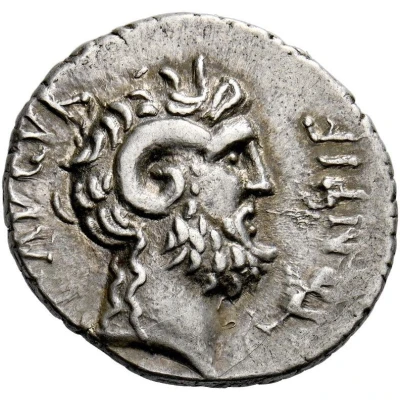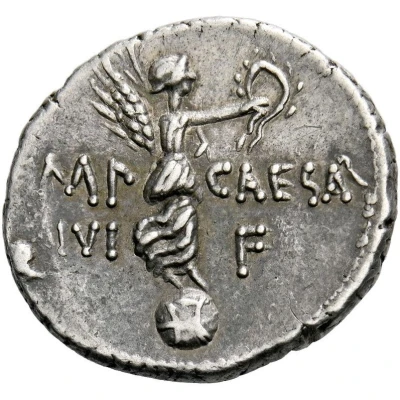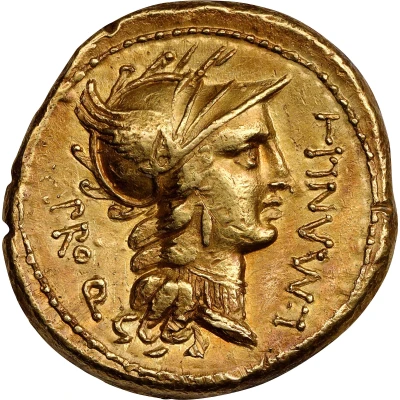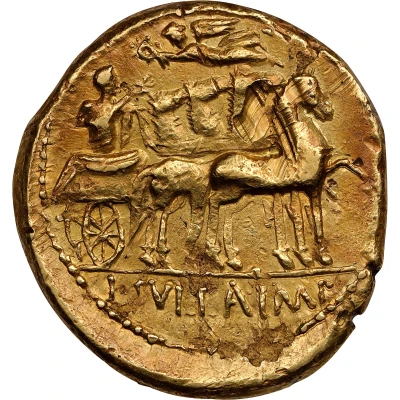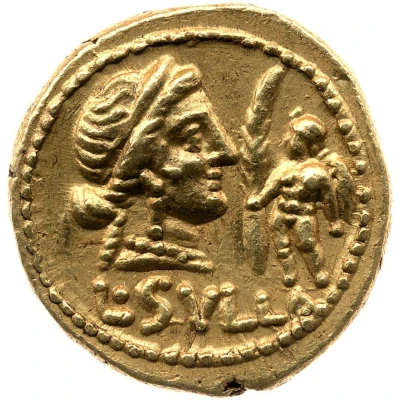
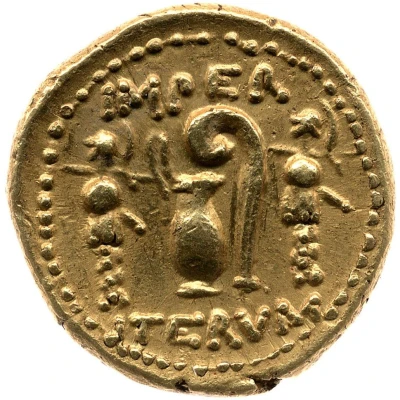

© Trustees of the British Museum
Aureus Cornelia: Lucius Cornelius Sulla; L•SVLLA / IMPER ITERVM 84 BC - 83 BC
| Gold | 10.72 g | 20.5 mm |
| Issuer | Rome › Roman Republic (509 BC - 27 BC) |
|---|---|
| Period | Republic (509 BC - 27 BC) |
| Type | Standard circulation coin |
| Years | 84 BC - 83 BC |
| Value | Aureus (25) |
| Currency | Denarius of 16 Asses (141 – 27 BC) |
| Composition | Gold |
| Weight | 10.72 g |
| Diameter | 20.5 mm |
| Shape | Round (irregular) |
| Technique | Hammered |
| Orientation | Variable alignment ↺ |
| Demonetized | Yes |
| Updated | 2024-10-06 |
| Numista | N#311981 |
|---|---|
| Rarity index | 100% |
Reverse
Jug and lituus between two trophies; inscriptions above and below.
Border of dots.
Script: Latin
Lettering: IMPER ITERVM
Unabridged legend: Imperator Iterum
Translation: Emperor Once Again
Comment
This coin was issued by Sulla who struck as imperator in the East without senatorial authorization.The gens Cornelia was one of the most distinguished Roman gentes, and produced a greater number of illustrious men than any other house at Rome. Servius Cornelius Cossus Maluginensis was first to achieve the consulship in 485 BC. The gens was a major contributor to the highest offices of the Republic, and contested for consulships with the Fabii and the Valerii from the 3rd century BC. Over thirty percent of all consulships were held by men from Cornelii; several great commanders also came from this family.
Interesting fact
One interesting fact about the Aureus coin is that it was issued during the reign of Lucius Cornelius Sulla, who was a powerful Roman general and statesman. Sulla is known for his military campaigns against Mithridates VI of Pontus and his subsequent reforms of the Roman constitution, which had a significant impact on the Roman Republic. The coin's design, which features an image of Sulla on one side and a depiction of Imperator on the other, reflects his importance and influence during this time period.
